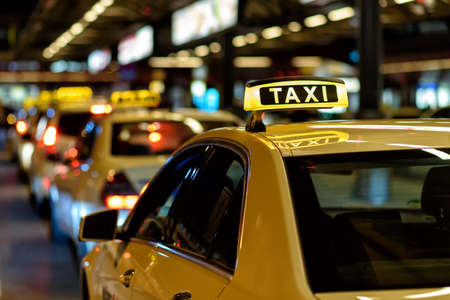1. Introduction to Electric Taxi Services in India
The rapid urbanisation of Indian cities has ushered in a new era of mobility, with electric taxi services emerging as a transformative force on the countrys bustling roads. As metropolitan centres such as Delhi, Mumbai, Bengaluru, and Hyderabad grapple with rising air pollution and traffic congestion, the adoption of electric cabs is seen not just as an innovation but as a necessity aligned with Indias sustainable development goals. Driven by the governments ambitious policies like FAME (Faster Adoption and Manufacturing of Electric Vehicles) and increasing environmental consciousness among urban dwellers, electric taxis are steadily gaining traction. However, the transition is influenced by more than policy and environment—Indias diverse cultural landscape plays a significant role in shaping public acceptance. The iconic yellow-and-black kaali-peeli taxis now share space with sleek, eco-friendly EVs, reflecting a blend of tradition and modernity. From tech-savvy millennials seeking green alternatives to families prioritising cost savings on daily commutes, the rationale for choosing electric cabs varies citywise but is deeply rooted in a collective aspiration for cleaner air and smarter cities. This report explores the nuanced rise of electric taxi services across major Indian cities, delving into trends, challenges, and the unique cultural factors that define their journey.
2. Citywise Adoption and Leading Players
India’s electric taxi revolution is unfolding at a different pace across its major cities, each reflecting unique adoption trends, ecosystem readiness, and the presence of key players. In this section, we provide an in-depth look at the evolution of e-taxi services in Delhi, Mumbai, Bengaluru, Hyderabad, and Kolkata—focusing on region-specific drivers and challenges.
Delhi: Accelerating Change in the Capital
The national capital stands as a pioneer in e-mobility initiatives. With robust EV policies and significant investments in charging infrastructure by the Delhi government, adoption rates for electric taxis are among the highest nationally. BluSmart has emerged as a prominent player here, leveraging a large EV fleet and strong brand visibility. Ola Electric is also making aggressive inroads, supported by state incentives.
Key Highlights: Delhi
| Aspect | Details |
|---|---|
| Ecosystem Readiness | High (well-developed charging network) |
| Major Players | BluSmart, Ola Electric, local startups |
| Adoption Rate | ~20% of new taxis registered are electric (2023-24) |
Mumbai: The Financial Capital’s E-Taxi Landscape
Mumbai’s dense urban environment and increasing air quality concerns have paved the way for gradual but steady electric taxi adoption. Key providers include Ola Electric and several homegrown startups who cater to both daily commuters and airport transfers. However, infrastructural bottlenecks—especially limited public charging stations—pose challenges.
Key Highlights: Mumbai
| Aspect | Details |
|---|---|
| Ecosystem Readiness | Moderate (expanding fast with municipal support) |
| Major Players | Ola Electric, eee-Taxi, local operators |
| Adoption Rate | ~12% of city cab fleet electrified (2023-24) |
Bengaluru: India’s Silicon Valley Goes Electric
Bengaluru leads South India’s e-taxi push, driven by tech-savvy consumers and a vibrant startup ecosystem. The city’s progressive policies have attracted companies like BluSmart and several innovative local ventures focusing on last-mile connectivity. The city benefits from early-stage investments in EV infrastructure and high consumer acceptance.
Key Highlights: Bengaluru
| Aspect | Details |
|---|---|
| Ecosystem Readiness | High (early adopter market with strong policy backing) |
| Major Players | BluSmart, Ola Electric, Lithium Urban Technologies |
| Adoption Rate | ~18% of new taxi registrations are electric (2023-24) |
Hyderabad & Kolkata: Emerging Frontiers for E-Taxis
The twin cities are witnessing rapid catch-up in e-taxi adoption. Hyderabad benefits from proactive state policies and collaborations between government agencies and private mobility firms. Kolkata, historically dominated by yellow cabs, now sees startups piloting e-taxi fleets with promising results.
Ecosystem & Player Snapshot:
| City | Ecosystem Readiness | Main Service Providers | E-Taxi Penetration Rate (2023-24) |
|---|---|---|---|
| Hyderabad | Growing (government-led initiatives) | Ola Electric, Rapido EV, local startups | 10% |
| Kolkata | Emerging (pilot programs expanding) | BluSmart pilots, regional players | 7% |
This citywise analysis highlights not only the diversity of India’s urban mobility landscape but also the crucial role of local context in shaping the future of electric taxi services. From aggressive expansion strategies by BluSmart and Ola Electric to grassroots innovation by regional startups, each city offers unique lessons for scaling sustainable transport solutions nationwide.
![]()
3. Government Policies, Incentives and Urban Infrastructure
The evolution of electric taxi services in India owes much to the progressive government policies and incentives rolled out at both national and state levels. The Indian government has recognised the urgent need to curb vehicular emissions in rapidly urbanising cities, and electric mobility is a cornerstone of this mission.
National EV Policies: Laying the Foundation
At the heart of Indias push for electrification is the National Electric Mobility Mission Plan (NEMMP) 2020, which set ambitious targets for EV adoption across sectors. The central government’s FAME (Faster Adoption and Manufacturing of Hybrid & Electric Vehicles) scheme, now in its second phase (FAME II), has earmarked substantial funds to subsidise electric vehicles—including e-taxis—by reducing their upfront costs and supporting ecosystem development.
FAME II Scheme: Accelerating E-Taxi Adoption
Under FAME II, incentives are provided not only to manufacturers but also directly benefit fleet operators and drivers. Subsidies on lithium-ion battery packs, reduced GST rates on EVs (down to 5%), and direct grants have made electric taxis more financially viable compared to their petrol or diesel counterparts. This policy-driven approach is especially visible in metropolitan cities like Delhi, Mumbai, Bengaluru, and Hyderabad, where e-taxi numbers are steadily rising.
State-Level Drives & Local Innovations
States such as Maharashtra, Karnataka, Telangana, Tamil Nadu, and Delhi NCR have crafted their own tailored EV policies. These include waivers on road tax and registration fees for electric vehicles, dedicated parking slots for e-taxis at airports/railway stations, green registration plates for quick identification, and even local subsidies on charging infrastructure installation. Kerala’s “E-Mobility Policy” notably targets 1 million EVs on roads by 2022, with specific provisions for ride-hailing services.
Urban Infrastructure: Powering the Transition
Municipalities are increasingly collaborating with private players to expand public charging networks. Fast-charging stations are being set up near high-demand transit points—metros, malls, tech parks—which directly supports e-taxi operations by minimising downtime. Cities like Delhi have introduced dedicated EV lanes and exclusive zones for electric taxis during peak pollution episodes, further incentivising fleet conversion.
Incentivising Drivers: Making the Switch Attractive
Beyond infrastructural upgrades, city governments are offering practical incentives for drivers: lower license renewal fees for e-taxi permits, interest-free loans for vehicle purchase or retrofitting kits (especially popular in Bengaluru’s auto-rickshaw sector), access to special e-mobility driver training programmes, and digital platforms that prioritise eco-friendly rides within aggregator apps. Such measures are gradually shifting driver sentiment from “why switch?” to “why not!”
Through an evolving mix of national vision, state-level innovation and city-specific action plans, India’s regulatory ecosystem continues to make strong headway towards a greener urban transport future—one where electric taxis form an integral part of daily commutes while reducing environmental impact.
4. Consumer Experience and Driver Perspectives
Rider Preferences: Comfort, Convenience, and Eco-Conscious Choices
Across Indian cities from Delhi to Bengaluru, riders are increasingly drawn to electric taxi services for their smooth rides and silent operation. The eco-conscious urban Indian, especially in metros like Mumbai and Hyderabad, values the reduced carbon footprint. However, rider expectations also hinge on reliability and availability of cabs at peak hours. A notable trend is the preference for app-based booking owing to its transparency in fare calculation and trip tracking.
Affordability: Is Electric Taxi Really Cheaper?
While upfront fares for electric taxis are often competitive with traditional autos and petrol cabs, affordability remains a mixed bag depending on city subsidies and charging infrastructure. Below is a comparative table highlighting average ride costs in key Indian cities:
| City | Electric Taxi (₹/km) | Petrol Taxi (₹/km) | Traditional Auto (₹/km) |
|---|---|---|---|
| Bengaluru | 13-15 | 15-18 | 12-14 |
| Mumbai | 14-16 | 16-19 | 13-15 |
| Delhi NCR | 12-14 | 14-16 | 11-13 |
| Kolkata | 12-13 | 13-15 | 10-12 |
App Usability: Bridging Digital Gaps Across Cities
The usability of electric taxi apps like BluSmart, Ola Electric, and Uber Green has been pivotal in user adoption. Riders praise easy booking, real-time cab tracking, digital payments via UPI or Paytm, and customer support in regional languages such as Hindi, Kannada, or Bengali. However, some users in tier 2 cities have cited issues with app crashes or lack of language options reflecting India’s diverse linguistic landscape.
Driver Testimonies: Operational Savings & Daily Challenges
Santosh Kumar, EV driver in Pune: “Since switching to an e-taxi, my monthly fuel expense has dropped by almost 60%. But sometimes I have to wait long queues at charging stations during office rush.”
Ayesha Begum, Delhi: “Passengers often ask about battery backup. They seem more open now than last year. Still, range anxiety is real for us drivers if charging points are far.”
Naveen Reddy, Bengaluru: “Maintenance is less compared to my old diesel cab. But government incentives need to be more consistent across states.”
Evolving Societal Perception of Electric Vehicles (EVs)
The narrative around EVs is changing rapidly in India. In cities like Hyderabad and Chennai, where air pollution concerns are high, electric taxis are seen as a positive shift toward sustainable mobility. Social acceptance is growing as more Indians experience EV rides firsthand and see their neighbours opting for green commutes.
Yet challenges remain—limited charging infrastructure outside major urban centres can lead to hesitancy among both drivers and riders. As digital literacy improves and state policies become more supportive, the coming years may see electric taxis move from niche to mainstream in Indias dynamic urban fabric.
5. Environmental and Social Impact
Electrification: Cleaner Air and Quieter Cities
The electrification of taxi services in India, particularly in urban centres like Delhi, Mumbai, Bengaluru, and Hyderabad, has delivered tangible environmental benefits. By replacing diesel and petrol vehicles with electric taxis, cities have witnessed a measurable reduction in tailpipe emissions, directly contributing to improved air quality. For instance, Delhi’s ambitious EV policies have led to a noticeable dip in PM2.5 levels along major arterial roads during peak hours. Commuters and residents alike report less noise pollution as well—electric taxis glide through city lanes with barely a hum, transforming the ambient soundscape from relentless honking and engine rattle to a more peaceful urban experience.
Job Creation and Equitable Economic Opportunities
The growth of e-taxi fleets across India’s metropolitan regions has also catalysed new job opportunities. The emergence of local EV maintenance workshops, battery swapping stations, and driver upskilling programmes—often supported by both private enterprises and government schemes—has fostered employment for thousands. This shift is particularly impactful for drivers from marginalised backgrounds, as many ride-hailing platforms offer incentives for adopting e-taxis. Women drivers have also found new opportunities in this space, with initiatives such as ‘She Cab’ in Hyderabad prioritising gender-inclusive employment.
Barriers to Broader Environmental Gains
Despite these advances, the environmental gains of electric taxis are tempered by India’s energy landscape. The national power grid remains heavily reliant on coal; as a result, the lifecycle emissions of e-taxis remain intertwined with fossil fuel-based electricity generation. In states where renewable energy penetration is still low, the carbon footprint reduction is less pronounced than statistics at the tailpipe might suggest. Additionally, uneven charging infrastructure and high upfront vehicle costs can slow adoption among independent drivers outside Tier 1 cities.
Reflections and Pathways Forward
For India’s electric taxi revolution to realise its full potential—in terms of climate resilience and social equity—there is a pressing need for policy coherence between transport electrification and grid decarbonisation. Investment in solar-powered charging stations (such as those pioneered in Gujarat) and targeted subsidies for small fleet operators could accelerate positive impact. As Indian cities continue their journey towards greener mobility, ongoing collaboration between government bodies, industry leaders, and citizen groups will be crucial to ensure that environmental benefits are distributed equitably across all urban communities.
6. Emerging Trends and Road Ahead
Integration with Public Transport
The electric taxi landscape in India is witnessing a strategic shift, with cities like Delhi, Bengaluru, and Hyderabad actively piloting integration between e-taxi fleets and public transportation systems. Initiatives such as app-based booking of e-taxis at metro stations or bus terminals are enabling seamless first-and-last-mile connectivity for urban commuters. These integrations not only enhance commuter convenience but also help reduce traffic congestion and air pollution by encouraging shared mobility. Collaboration between state transport authorities and private e-mobility startups is crucial for the success of these multimodal networks.
Battery Swapping and Charging Innovations
One of the key challenges faced by electric taxis in India is long charging times and limited charging infrastructure. To address this, battery swapping models—where drained batteries are quickly exchanged for fully charged ones—are gaining traction in cities such as Ahmedabad and Chennai. Local startups are partnering with traditional petrol pump operators to set up battery swap kiosks at strategic locations, significantly reducing taxi downtime. Additionally, solar-powered fast-charging stations are emerging in tier-2 cities, leveraging abundant sunlight and lowering operational costs for drivers.
Localized Innovations and Customization
Indias diversity calls for city-specific solutions. In Mumbai, waterproofing modifications are being made to electric vehicles to withstand monsoon flooding. In Kolkata, compact EVs suitable for narrow lanes are being introduced to cater to local commute patterns. Meanwhile, fleet operators in Pune are experimenting with AI-driven dynamic pricing to optimize driver earnings during peak hours while keeping rides affordable for passengers. Such localized innovations ensure that electric taxi services remain resilient and relevant across different urban contexts.
City-Specific Recommendations
- Delhi NCR: Prioritize integration with metro lines and expand dedicated EV lanes to accelerate adoption.
- Bengaluru: Foster partnerships between tech firms and auto manufacturers to drive real-time data sharing for route optimization.
- Mumbai: Encourage waterproofing standards for EVs and expand battery swapping near high-flood zones.
- Kolkata: Incentivize the rollout of smaller EVs suitable for old city areas; integrate payment systems with local transit cards.
Outlook: Accelerating Scale Across India
The road ahead for electric taxi services in India is promising but demands sustained policy support, investments in charging infrastructure, and continuous innovation tailored to each citys needs. As environmental consciousness grows among urban Indians and government pushes for cleaner mobility options, electric taxis stand poised to transform urban transportation. By fostering collaboration among stakeholders—city planners, technology providers, local entrepreneurs, and commuters—India can lead a green mobility revolution that is inclusive, efficient, and uniquely its own.


